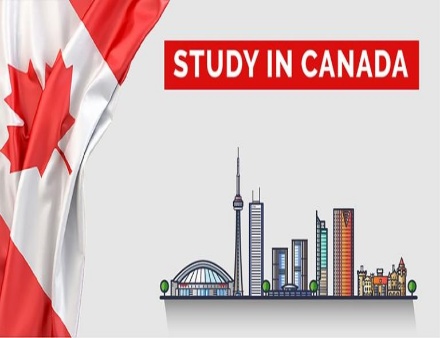Studying in Canada is a dream for many international students. Known for its high-quality education, cultural diversity, and world-class institutions, Canada attracts thousands of students from around the globe every year. However, one crucial step in the visa application process for studying in Canada is proving that you have sufficient funds to cover your expenses. This is commonly referred to as Proof of Funds (POF). In this guide, we’ll take you through what proof of funds means, why it is required, and how to calculate it accurately for your Canada student visa application.
What Is Proof of Funds?
Proof of Funds (POF) is the evidence that you have enough financial resources to support yourself while studying in Canada. It demonstrates your ability to pay for tuition, living expenses, and other associated costs without relying on unauthorized work or government support. The Canadian government mandates this requirement to ensure international students can focus on their studies without financial hardship.
Without sufficient proof of funds, your study permit application may be denied, so it’s essential to calculate and document it correctly.
Why Is Proof of Funds Important for a Canada Student Visa?
The Canadian immigration authorities require proof of funds for the following reasons:
- Student Well-being: Ensures students have adequate financial support to cover tuition and living expenses.
- Immigration Compliance: Prevents individuals from overstaying their visas or becoming a burden on the Canadian economy.
- Legal Requirement: It is a mandatory criterion under Canada’s Immigration and Refugee Protection Act (IRPA) and its regulations.
How to Calculate Proof of Funds for a Canada Student Visa
To calculate your proof of funds, you need to consider three main components:
- Tuition Fees
- Living Expenses
- Travel Expenses (if applicable)
1. Calculate Tuition Fees
Your tuition fees depend on the institution and program you choose. These details are usually mentioned in your Letter of Acceptance (LOA) from the Canadian institution.
- Example:
If your tuition fees for the first year are CAD 20,000, you need to show this entire amount in your proof of funds calculation.
2. Calculate Living Expenses
The Canadian government has a set minimum amount for living expenses. These amounts vary based on the number of family members accompanying you.
- For students: CAD 10,000 per year (or CAD 833 per month)
- For the first accompanying family member: CAD 4,000 per year
- For each additional family member: CAD 3,000 per year
- Example:
If you are a single student with no dependents, your living expense requirement is CAD 10,000.
3. Include Travel Expenses (if applicable)
Although not always mandatory, it’s a good idea to include travel expenses, especially if you have already purchased your flight ticket. Budget CAD 1,000–CAD 2,000 for airfare.
Total Proof of Funds Required: Formula
Here’s a formula to calculate your proof of funds:
Total POF = Tuition Fees (1st year) + Living Expenses + Travel Expenses
- Example Calculation:
- Tuition fees: CAD 20,000
- Living expenses: CAD 10,000
- Travel expenses: CAD 1,500
- Total Proof of Funds Required: CAD 31,500
Acceptable Sources of Proof of Funds
You can provide proof of funds through any of the following sources:
- Bank Statements: Show at least 4–6 months of consistent balance.
- Guaranteed Investment Certificate (GIC): A GIC of CAD 10,000 is a common requirement for students applying under the Student Direct Stream (SDS).
- Education Loan: A loan sanction letter from a recognized financial institution.
- Proof of Scholarship: If you have received a scholarship, include official documents indicating the amount and duration of the scholarship.
- Sponsor Funds: If your parents or another family member are sponsoring you, submit their bank statements, an affidavit of support, and proof of relationship.
How to Document Proof of Funds
When submitting your proof of funds, ensure that your documents meet these requirements:
- Legibility: Documents must be clear and readable.
- Consistency: The balance in your account should not fluctuate drastically, as it may raise red flags.
- Translation: If documents are not in English or French, include certified translations.
- Recent Date: Ensure all documents are dated within the last 30 days before submission.
Common Mistakes to Avoid
- Insufficient Funds: Ensure your funds meet or exceed the required amount.
- Unsupported Sources: Do not use cash or unverified funds as proof.
- Inconsistent Documentation: Submit all pages of bank statements and avoid partial or edited documents.
- Missing Affidavit of Support: If using a sponsor, always include an affidavit of support.
How Much Proof of Funds Do You Need for the Student Direct Stream (SDS)?
The Student Direct Stream (SDS) is an expedited visa application process available to students from certain countries, including India, China, the Philippines, and Vietnam. Under the SDS, you must provide:
- A GIC of CAD 10,000
- Proof of payment for the first year’s tuition
- Proof of language proficiency
The total proof of funds requirement for SDS applicants is typically lower than for non-SDS applicants because of the GIC component.
Frequently Asked Questions
1. Do I need to show proof of funds for multiple years?
No, you only need to show proof of funds for the first year of your program.
2. Can my proof of funds come from multiple sources?
Yes, you can combine different sources, such as a GIC, bank savings, and a scholarship, to meet the requirement.
3. What happens if my proof of funds is insufficient?
Your visa application may be rejected if you fail to provide adequate proof of funds.
4. Can I use a joint account for proof of funds?
Yes, but you must provide evidence that you have access to the funds.
Final Thoughts
Calculating proof of funds for your Canada student visa is a critical step in the application process. By understanding the requirements, carefully documenting your sources, and avoiding common mistakes, you can strengthen your visa application and move closer to achieving your dream of studying in Canada.
Take the time to prepare and submit accurate financial documentation—it can make all the difference in ensuring a smooth visa process.
Are you ready to take the next step toward your Canadian education journey? Start planning today!



